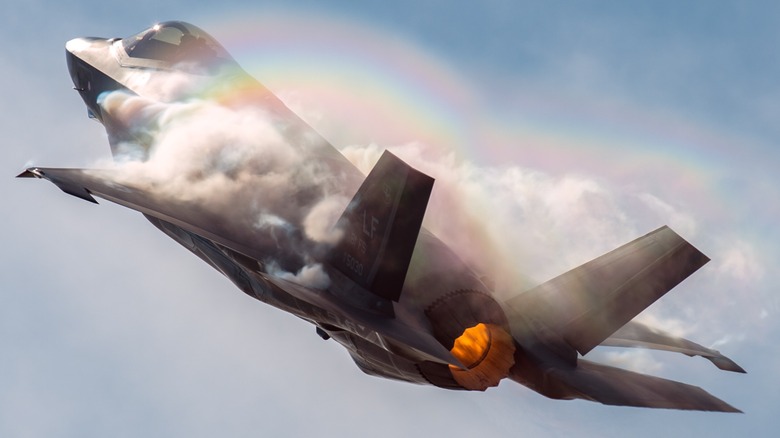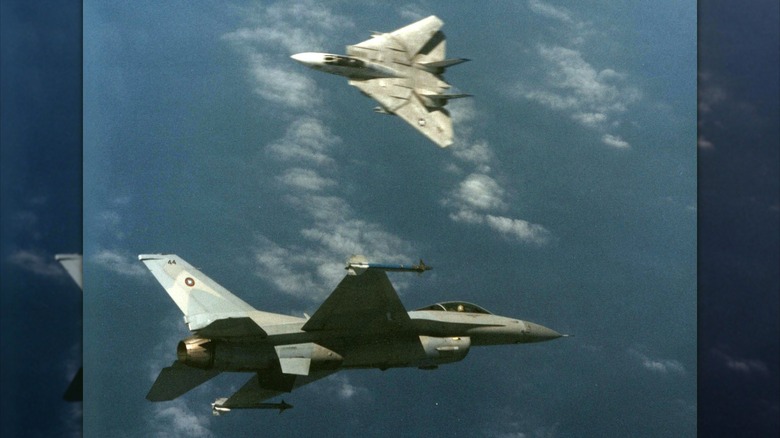How Do Fighter Jets 'Headbutt' Other Planes?
With the Russo-Ukrainian War and other conflicts heating up around the globe, the public is being exposed to military terminology with which they're unfamiliar. Words like "deconflict" and "weapons cache" tend to make the rounds, but another term that has people collectively scratching their heads is the so-called "headbutt maneuver" that's performed by airplanes. The reason the term is so confusing is that smashing a plane's nosecone into another aircraft sounds bewildering.
While the term sounds like there's physical contact between two planes, that's not what actually happens. A headbutt maneuver involves one aircraft flying in front of another, deliberately throwing its jetwash back onto the bogey. This gets the pilot's attention in a couple of ways, and it's primarily done to civilian aircraft that fly into unauthorized airspace. A headbutt maneuver is performed whenever one aircraft needs to gain the attention of another plane and radio communication fails. A pilot has little option other than to "headbutt" the other aircraft at that point.
In April 2025, an F-35A Lightning II chose not to dogfight and instead engaged a civilian aircraft that was unresponsive to radio communications while flying in restricted airspace over Mar-a-Lago in Palm Beach, Florida, with a headbutt maneuver. Pilots from the U.S. Navy, Air Force, other branches, and outside of the U.S. military perform headbutt maneuvers whenever they need to get a bogey's attention without resorting to lethal means.
How a fighter jet headbutts another aircraft
The headbutt maneuver can be done in a variety of ways, including the least dangerous option. Instead of throwing back jetwash for the offending plane to turbulently fly through, a fighter can fly beneath the target airplane. When ready, they fly about 500 feet in front of the other plane's nose, reducing the dangers of surfing a fighter's wake while gaining the other pilot's attention. Other methods could involve a fighter flying directly in front of the other plane, keeping a safe distance while engulfing it in jetwash.
While a pilot can potentially ignore a stealthy F-22 Raptor in front of them, having to fly through one's violent wake isn't easily ignored, as it directly impacts their ability to fly evenly. If the fighter's headbutt fails to get the attention they desire, they can fire off flares, which are also difficult to ignore. When the headbutt succeeds, the fighter then leads the other aircraft out of restricted airspace and is forced to land.
While headbutt maneuvers are most often done in response to civilian aircraft, they can also be performed for enemy planes. In those situations, a single fighter might move in front of the potential enemy while their wingman remains hidden or visible and in a position to engage should the need arise. This is the more dangerous option because civilian aircraft can't typically fire upon other planes, but a fighter or even a strategic bomber isn't afflicted by that limitation. Regardless, headbutting another plane is a tried and true method of establishing communications when all else fails.

